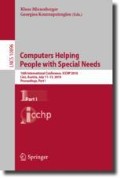Abstract
The impairment of finger movements after a stroke results in a significant deficit in hands everyday performances. To face this kind of problems different rehabilitation techniques have been developed, nevertheless, they require the presence of a therapist to be executed. To overcome this issue have been designed several apparatuses that allow the patient to perform the training by itself. Thus, an easy to use and effective device is needed to provide the right training and complete the rehabilitation techniques in the best way. In this paper, a review of state of the art in this field is provided, along with an introduction to the problems caused by a stroke and the consequences for the mobility of the hand. Then follows a complete review of the low cost home based exoskeleton project design. The objective is to design a device that can be used at home, with a lightweight and affordable structure and a fast mounting system. For implementing all these features, many aspects have been analysed, starting from the rehabilitation requirements and the ergonomic issues. This device should be able to reproduce the training movements on an injured hand without the need for assistance by an external tutor.
Access this chapter
Tax calculation will be finalised at checkout
Purchases are for personal use only
References
Arduino-IDE: Arduino 1.8.1, March 2018. https://www.arduino.cc/en/Main/Software
Telbios-Connect: Telbios-connect, March 2018. http://www.telbios.com/telbiosconnect/
Volpe, B., Krebs, H.I., Hogan, N., Edelstein OTR, L., Diels, C., Aisen, M.: A novel approach to stroke rehabilitation robot-aided sensorimotor stimulation. Neurology 54, 1938–1944 (2000)
Author information
Authors and Affiliations
Corresponding author
Editor information
Editors and Affiliations
Rights and permissions
Copyright information
© 2018 Springer International Publishing AG, part of Springer Nature
About this paper
Cite this paper
Candeo, R., Rossini, M., Aruanno, B., Covarrubias, M. (2018). Design of a Low-Cost Exoskeleton for Hand Tele-Rehabilitation After Stroke. In: Miesenberger, K., Kouroupetroglou, G. (eds) Computers Helping People with Special Needs. ICCHP 2018. Lecture Notes in Computer Science(), vol 10896. Springer, Cham. https://doi.org/10.1007/978-3-319-94277-3_62
Download citation
DOI: https://doi.org/10.1007/978-3-319-94277-3_62
Published:
Publisher Name: Springer, Cham
Print ISBN: 978-3-319-94276-6
Online ISBN: 978-3-319-94277-3
eBook Packages: Computer ScienceComputer Science (R0)

